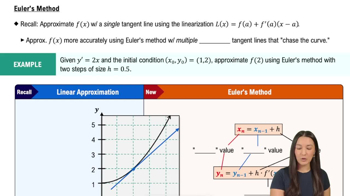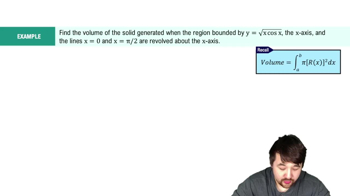9-34. Shell method Let R be the region bounded by the following curves. Use the shell method to find the volume of the solid generated when R is revolved about indicated axis.
{Use of Tech} y = In x/x²,y = 0,x = 3, about the y-axis
 Verified step by step guidance
Verified step by step guidance Verified video answer for a similar problem:
Verified video answer for a similar problem:



 5:38m
5:38mMaster Introduction to Cross Sections with a bite sized video explanation from Patrick
Start learning